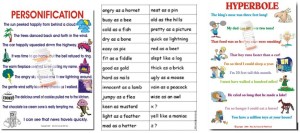Language is an important aspect of everyday life. We use it to communicate or interact with others by expressing our ideas, thoughts and emotions. Effective communication through different forms of language is critical to the success of an individual, a group or organization and society as a whole. That is why a solid understanding of language is so important. It not only helps students to become effective communicators in the future, but it also assists them to have an understanding for the structure of language when they write, be critical and reflective when they read and make the necessary connections between the written word and their everyday lives.
Language Arts is the foundation for effective communication. It includes correct spelling, punctuation, reading for meaning, understanding the rules of writing and studying past and present literary works along with the use of visual media.
Language as a Form of Art
This is why language should be seen as a form of art. If we take an extremely descriptive piece of writing, it should be able to paint a picture in our minds. Young children learn by imagining and doing. Engaging learners’ imaginations is one way to help students acquire language skills. It is why picture books engage our youngest learners and help them make connections between the pictures and the words that are being read to them. For older learners, we engage them in reading by structuring words in a way that stimulates their imagination and personal interests.
There are many poetic and language devices studied at school to help as be aware of the art of language – Antonyms and synonyms, similes and metaphors, hyperbole, personification, alliteration to name a few. Just as we take a brush to paint a picture, try using words as a colour pallet and paint a beautiful picture in the imagination of the reader using a variety of literary devices.
(Examples of Similes, Personification, and Hyperbole etc can be placed here)
If the above literary devices are taught and practiced in a fun and creative way, it is surprising how thinking skills develop and children are able to critically appraise their work.
Lately, I have been working on Reading/Comprehension with many of my students. I have found that when I read a descriptive passage to them and ask them to write down the key features of the passage as I read, their comprehension skills have soared. Where they would generally skip over these blocks of writing in a text, they are now beginning to appreciate “good” writing and understand that the use of language is an art form in which they desire to learn.
 This type of writing helps to engage kids in writing as it gives them creativity and a large degree of autonomy over what they write. Does it really matter if we don’t always conform to the prescribed text types taught at school? While these are indeed part of our curriculum, it can also be productive for young writers to be given opportunities to write freely in order for them to develop their own style of writing and discover how words are a tool that provide us with a blank canvas to communicate like an artist.
This type of writing helps to engage kids in writing as it gives them creativity and a large degree of autonomy over what they write. Does it really matter if we don’t always conform to the prescribed text types taught at school? While these are indeed part of our curriculum, it can also be productive for young writers to be given opportunities to write freely in order for them to develop their own style of writing and discover how words are a tool that provide us with a blank canvas to communicate like an artist.
 CREDITS: Imagination: www.cindyhayen.com
CREDITS: Imagination: www.cindyhayen.com
Personification banner – image from: cbeworkforce.blogspot.com
Hypobole – www.glogster.com
Similes – www.enchantedlearning.com

